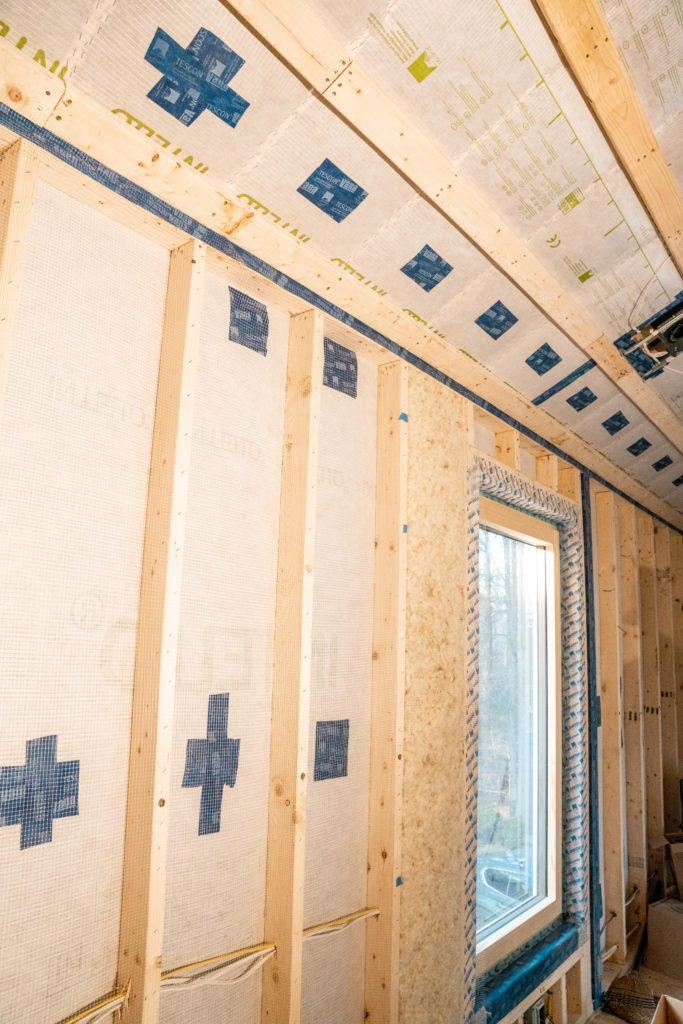Vapor barriers are a common theme in our daily communique with the ever-increasing number of consumers who care and/or want to learn about the building envelope and its importance in the process.
By definition a vapor barrier is just that; typically, a poly film which is impermeable and therefore does not allow vapor to move through it. Sounds great, right? Who wants moisture in a wall or ceiling cavity? Simple, no one.
Here is the problem, moisture, condensation or vapor drive is inevitable. More simply, it is impossible to avoid some derivative of moisture in these cavities – with or without a vapor barrier. Once you are comfortable with this very simple fact it is easy enough to move on to the crux of the matter which is what type of material is getting wet and how does one allow for an escape route.
Let’s take a step back. On balance, older houses are typically built better than new ones. They last longer and suffer fewer problems. Materials can be part of this but perhaps more important is the process. Walls may have little or no insulation and certainly don’t have a vapor barrier. Terrible, right? From an efficiency perspective yes, but not so much when it comes to longevity. Unencumbered walls can bake dry with seasonality which means the structure has a chance to last longer while the heating and cooling bills can spin out of control.
As building practices have evolved to include efficiency, we’ve picked up some bad habits. Vapor barriers are one of them. We know builders who put the barrier up to pass inspection and then take it down. This is expensive and wasteful all at once.
So, what is the answer?
Fortunately, evolution tends to persist. We are now in an era where one can achieve the efficiency of air tightness without disrupting, and, in fact, addressing inherent vapor drive. We opine further here and link to an article in SBC magazine here. In short, there are membranes that are air tight thus keeping heat or cool air in but also have variable perm ratings so as to allow moisture to escape. Here is a very simple example which is the premise for Proclima’s Intello membrane. Two friends are sitting at a coffee shop; one has just bought a pastry that has been packaged in a plastic bag and it is sitting in the sun. Inevitably moisture is going to form on the inside of the bag. Wouldn’t it be great (for the longevity of the pastry) if the moisture could escape without any outside air infiltrating the bag? Welcome to the smart enclosure system.
Before we sign off, why should the cavity be full of wool as opposed to some other form of insulation? First and foremost, it is the only insulation medium you can buy that actively manages moisture. It will absorb and desorb against 65% relative humidity. That means it is actively managing moisture and in effect assisting with temperature control. Equally important is a wool fiber’s construct. It is a keratin and therefore will not support the growth of mold. Quite simply, a wool fiber has evolved in nature as an insulator over 1000s of years. What other fiber has been through such an R&D process and can be employed in this manner? None.
Some may try to argue that there are insulation options that are indifferent to moisture ie impermeable. That may be, but given the inevitability of vapor drive where then is that moisture going? Is it rotting studs and plywood and allowing for mold to build up within your living space? There are countless examples that make it clear this can and does happen.
We are not here to debate or argue over the best solution. We simply enjoy letting consumers know there are natural, high-performance insulation alternatives that are code compliant and being put to work every day. We note the majority of industry practitioners continue to be either mis-informed or change-resistant, or both, which makes it imperative that if you are asking questions about basic practices and not getting reasonable responses then indeed something likely is amiss. Just because someone has been doing something for a long time does not mean they know best. In fact, in the modern built environment it is more often than not the industry mainstays keeping great things from happening.
Our recommendation is be vigilant and keep digging for the answers you expect – even those unwanted. We are very happy to communicate our findings and point you in the direction of those who know a great deal more than us.
In the interim, what to do with a vapor barrier? Nix the poly film and find a membrane that will perform in a way that will improve your living space.


That’s cool that you could get a barrier that would let moisture out, but keep hot or cold air in. I would think that would be particularly useful for summer in a humid area. I dot like having my house being all hot and sticky, so I’ll have to consider getting a builder to put some in my walls if I decide to build a new house.
https://doubled.builders/services
Where can I purchase this sheep wool insulation?
Directly with us! https://residential.havelockwool.com/# Thanks.
Hello: My issue is not the cost of the wool insulation, but the cost of shipping. My question is, how can you ship the wool at a lower cost?
We are doing our best to keep shipping costs down including always negotiating rates with our shipping providers.Thanks.
Hi, am installing sheep’s wool insulation on a sloping ceiling for a room in my attic. Would you but a vapour control layer or membrane after the wool on the heated side? In is in 300 year old house in the north of Britain. Regards Geoff
It should be said that we are not accredited building scientists so there is very likely someone better to opine on the matter than us. That said, we are in the discussion frequently and will happily share what we hear all the time. A vapor barrier has no place on either side of a cavity. Airtight, vapor variable membranes that allow for efficiency along with an escape route for inevitable moisture are certainly becoming a best practice. They can go on either side of the cavity and should definitely go on the outside if you have to pick one.